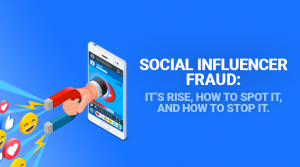— July 30, 2019
Having trouble with your Facebook ads? Not getting the results you had hoped for? Don’t give up! With over 2.38 billion monthly active users on the platform, deep targeting capabilities, and a low average cost per click, an effective Facebook ad strategy is worth pursuing—even if it takes a little troubleshooting.
In this article, we explore a few questions to help you analyze poorly performing Facebook ads and optimize them for better performance. Let’s dive in!
Are Your Ads Getting Approved?
It might be an obvious place to start, but one of the first things to check is your individual ad’s approval. You may have trouble running an ad if it violates Facebook’s ad policy, which changes regularly.
You’ll also want to consider each of your ads’ image-text ratios. Facebook will place ratings on the images used in your ads, and if the image has too much text, your ads’ reach might be limited.
Here’s an example of Facebook’s image-text ratings which you’ll see for each ad being reviewed:
- OK: Your ad will run normally.
- Low: Your ad’s reach may be slightly lower.
- Medium: Your ad’s reach may be much lower.
- High: Your ad may not run.
How to Troubleshoot
Ensure that each of your ads are approved and aren’t limited in reach due to a high image-text rating. If you see warnings on any of your ad images, read more about Facebook’s ad policy. Before uploading an image for your ad, use Facebook’s Image Text Check tool to ensure the image won’t affect your ad’s visibility.
Are Your Ads Well-Written and Designed?
Both copy and visual layout can affect an ad’s performance. Effective Facebook ads have a clear message, and if your ads aren’t able to convey a single cohesive message due to grammatical errors, cut-off sentences, or confusing images, that may be the root cause of poor performance.
How to Troubleshoot
Review the creative aspects of your ads to determine whether or not they follow common ad copy and ad design best practices.
Here are a few basic best practices to begin with:
- Text is proofread for proper spelling and grammar.
- Body and link text are concise and no lines of text are cut short.
- Images and video used in the ad align with copy and support your message.
- Overall message is attention-getting, compelling. and relevant to your audience (more on this in a moment).
Is Your Audience Too Broad or Too Narrow?
Another reason your ads may not be performing well is that your target audience within Facebook Ads Manager is either too broad or too narrow. If the audience is too broad, you may be paying to reach people that have no interest in your ad’s message, resulting in low clicks and conversions. However, if the audience is too narrow, you may not be getting enough impressions for the results you want.
How to Troubleshoot
Check the size of your audience selection within Ads Manager and make sure you’ll have enough potential reach. When it comes to audience selection, most experts recommend beginning with a broad audience, then narrowing in on smaller subsets that align with specific ad messaging. Start defining your audience with basic demographics like location, age, gender, and languages. Then, get into more detailed targeting based on interests or behaviors.
Is Your Ad Messaging on Target?
Your ads may not be performing because they’re simply not compelling enough for anyone to take action. When looking at your ads, are they specific to the audience’s interests or needs? Is it obvious who exactly the ads are for and why they would be interested in taking action by clicking the ad? A Facebook ad that tries to speak to everyone won’t likely be compelling to anyone. That is because the most effective Facebook ads are highly targeted, personalized, and compelling to a specific audience.
How to Troubleshoot
As you narrow in on your detailed audience targeting options, consider the messaging in your ads and whether or not the ads truly speak to an interested audience. If you’re unsure whether or not your ad message is compelling and enticing to the audience, your next step should be to revisit your marketing personas. Compare your marketing personas’ goals, interests, pain points, and demographics with the defined target audience of the ads you’re running to narrow your message specific to each persona. Audience Insights can also help round out your personas.
Are Your Ads Reaching All Lifecycle Stages?
In some cases, you may find that ads are getting clicked, but the prospects clicking the ads aren’t converting. Similar to first-time visitors on a website, they may not be ready to convert on the first impression. Instead, they might need more time and a little nurturing with awareness and consideration stage content before they are interested in converting on a more bottom-of-funnel offer.
How to Troubleshoot
Consider the lifecycle stage of each ad and set realistic expectations on how likely they are to convert on the first impression. For those that may need some additional nurturing, consider implementing a retargeting strategy where the second or third impression ad displayed is based on previous engagements or website visits.
Are You Testing?
If at first you don’t succeed, try, try, try again. Ad creative (copy and layout), ad positioning, audiences, and messaging are all things that can (and should) be continually tested and optimized for improved performance. Use Facebook split testing to compare ads and see what works best for each segmented audience. When doing so, you’ll want to be consistent in how you analyze results and keep track of what’s working so you can replicate success. Hopefully, the troubleshooting questions outlined in this article will help!
Digital & Social Articles on Business 2 Community
(44)





